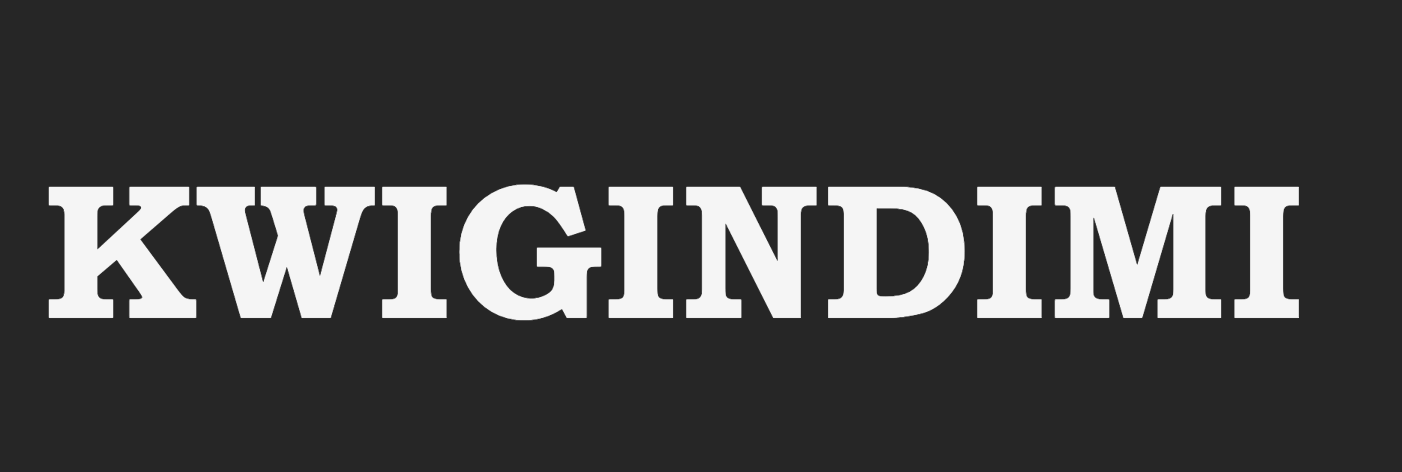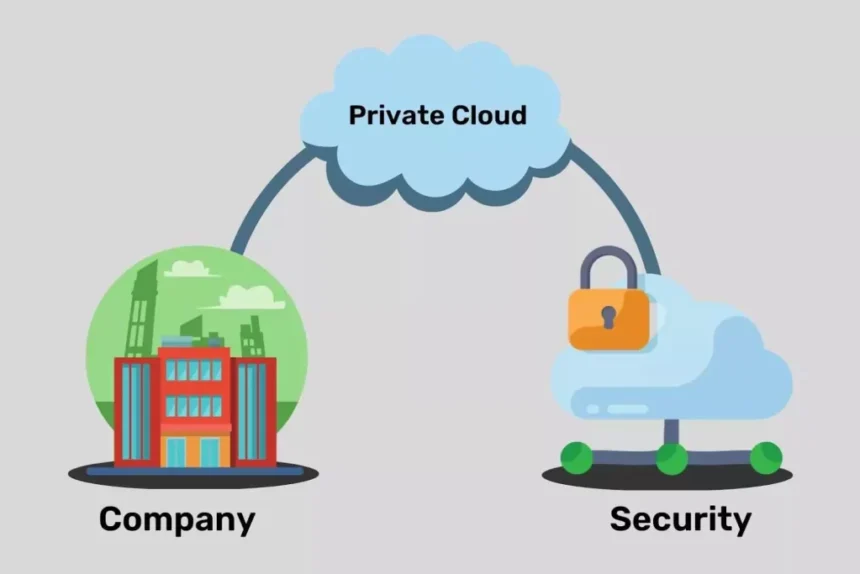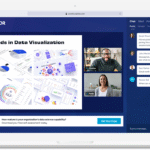Private cloud storage has emerged as a cornerstone of modern IT strategy, offering businesses dedicated environments that combine the scalability of the cloud with the control and security traditionally associated with on-premises infrastructure. As cyber threats grow ever more sophisticated and regulators tighten data protection requirements, choosing the right private cloud storage solution is vital.
In this in-depth guide, we explore every facet of secure private cloud storage defining its key characteristics, dissecting essential security features, evaluating leading vendors, and offering actionable advice to ensure your organization selects the most robust platform for its unique requirements.
Understanding Private Cloud Storage
Defining Private Cloud Storage
Private cloud storage refers to storage infrastructure dedicated solely to one organization. Unlike public cloud services where resources are shared among many tenants private clouds provide exclusive compute, network, and storage resources, whether hosted on-premises, in a colocation facility, or managed by a vendor. This single-tenant model enables maximum control over security policies, compliance configurations, and performance tuning, making it ideal for sectors handling sensitive data such as healthcare, finance, and government.
At its core, private cloud storage leverages virtualization technologies like VMware vSphere, Microsoft Hyper-V, or open-source OpenStack to partition physical servers into isolated virtual machines (VMs) or containers. These virtualized compute nodes attach to shared storage pools implemented via Network-Attached Storage (NAS), Storage Area Networks (SAN), or Software-Defined Storage (SDS) solutions. Administrators manage resources through unified dashboards or orchestration platforms, automating tasks such as provisioning, scaling, and load balancing.
Benefits and Trade-Offs
Private clouds deliver several advantages over public alternatives:
- Dedicated Security: Isolation from other tenants reduces the attack surface and avoids “noisy neighbor” interference.
- Customization: Complete control over patch cycles, encryption keys, and network segmentation.
- Compliance Alignment: Easier adherence to regulations (HIPAA, GDPR, PCI DSS) via direct control of data location, access logs, and audit trails.
- Predictable Performance: Guaranteed resources yield consistent IOPS and throughput, critical for latency-sensitive applications.
However, private clouds also require significant upfront investment in hardware, skilled personnel, and ongoing maintenance. Businesses must weigh these trade-offs against regulatory mandates, data sensitivity, and long-term TCO considerations.
The Imperative of Security in Private Cloud Environments
Evolving Threat Landscape
In recent years, cybercriminals have shifted from broad, opportunistic attacks toward targeted campaigns exploiting misconfigurations, unpatched vulnerabilities, and insider threats. Ransomware gangs specifically target backup repositories and cloud environments, knowing that encrypted or stolen backups can compel large ransom payments. Zero-day exploits against virtualization platforms and storage controllers underscore the importance of a multi-layered defense strategy.
Moreover, regulatory bodies now impose steep penalties for data breaches. Under GDPR, fines can reach up to €20 million or 4 percent of global annual turnover whichever is higher. HIPAA violations risk up to $1.5 million per year per violation category. A secure private cloud is therefore not just prudent: it’s often mandatory.
Core Security Principles
When architecting a secure private cloud storage environment, organizations should adopt the following principles:
- Defense in Depth: Layered safeguards from physical access controls and hardware-rooted trust to network micro-segmentation and application-level encryption.
- Least Privilege: Enforce RBAC and ABAC policies to limit user and service access strictly to necessary operations.
- Zero Trust: Never trust any device or user implicitly. Require continuous authentication, authorization checks, and anomaly detection.
- End-to-End Encryption: Protect data at rest, in transit, and during processing, with robust key management practices.
- Continuous Monitoring: Deploy SIEM and UEBA solutions to analyze logs in real time, detect anomalies, and trigger rapid incident response.
Essential Security Features to Evaluate
Data Encryption
Encryption is foundational. Evaluate whether a solution supports:
- At-Rest Encryption: AES-256 or higher, applied to disks, volumes, or object storage.
- In-Transit Encryption: TLS 1.2+ for all data transfers, including replication and backup.
- Customer-Managed Keys (BYOK): Integration with HSMs or key-vault services (e.g., AWS KMS, Azure Key Vault, HashiCorp Vault) for exclusive control over keys.
- Hardware-Based Encryption: Self-encrypting drives (SEDs) and HSMs providing FIPS 140-2 Level 3/4 compliance.
Identity and Access Management (IAM)
Robust IAM enforces the principle of least privilege and reduces unauthorized access:
- Directory Integration: Native connectors to Active Directory, LDAP, or SAML 2.0 identity providers.
- Multi-Factor Authentication (MFA): Mandatory for all administrative and sensitive operations.
- Role-Based Access Control (RBAC): Predefined and custom roles governing user, group, and service permissions.
- Attribute-Based Access Control (ABAC): Policies leveraging user attributes (department, clearance level) for dynamic access decisions.
- Audit Logging: Detailed logs of authentication events, configuration changes, and data access, retained per compliance retention policies.
Network Security and Segmentation
Logical and physical network segmentation limits attack surfaces and lateral movement:
- VLANs and VRFs: Isolate storage traffic from management and production networks.
- Software-Defined Networking (SDN): Micro-segmentation at the hypervisor or virtual switch layer, enforcing per-VM policies.
- Firewalls and DDoS Protection: Stateful inspection, application-layer gateways, and volumetric attack mitigation services.
- Intrusion Detection/Prevention Systems (IDS/IPS): Behavioral analysis and signature-based defenses.
Compliance and Certifications
Third-party validations demonstrate adherence to industry best practices:
- ISO/IEC 27001: Information security management systems.
- SOC 2 Type II: Continuous audits of security, availability, confidentiality, and privacy controls.
- HIPAA/HITRUST CSF: For healthcare workloads.
- PCI DSS: For payment data environments.
- GDPR: Data protection regulations for EU personal data.
- FedRAMP: U.S. government accreditation for cloud service providers.
Data Resiliency and Backup
Even secure environments must guard against data loss and corruption:
- Geo-Redundant Replication: Asynchronous or synchronous replication across regions or availability zones.
- Immutable Snapshots: Write-once, read-many (WORM) snapshots that cannot be altered or deleted within retention windows.
- Automatic Backups: Policy-driven, frequent backups with point-in-time restore capabilities.
- Disaster Recovery Orchestration: Automated failover and failback processes, with defined RTOs and RPOs.
Evaluating Leading Secure Private Cloud Storage Providers
HPE GreenLake for Private Cloud
HPE GreenLake delivers a consumption-based model combining HPE ProLiant servers, Nimble Storage arrays, and VMware vSphere under a managed service umbrella. Key security features include:
- End-to-End Encryption: AES-256 encryption for data at rest on Nimble Storage and TLS 1.3 for data in flight.
- HSM Integration: Support for Vormetric and Thales HSMs for customer-managed keys.
- Micro-Segmentation: VMware NSX for East-West traffic isolation.
- Compliance: ISO 27001, SOC 2 Type II, and HIPAA for healthcare workloads.
- Integrated Monitoring: Centralized SIEM integration via Splunk and QRadar connectors.
GreenLake’s managed services offload patching, firmware updates, and 24×7 support, reducing operational overhead. Its pay-as-you-grow model aligns capacity with actual usage, avoiding overprovisioning costs.
VMware Cloud Foundation on Dell EMC VxRail
Dell EMC’s VxRail HCI appliances, coupled with VMware Cloud Foundation, deliver a turnkey private cloud stack. Security highlights:
- NSX Micro-Segmentation: Flow-level controls prevent lateral movement.
- Full-Disk Encryption: KMIP-compliant key management interfacing with Dell EMC PowerMax and Unity XT arrays.
- Cyber Recovery Vault: Air-gapped backup repositories, isolated via dedicated compute clusters.
- Compliance: FedRAMP Moderate, PCI DSS, and GDPR-ready audit tooling.
- Operational Automation: Lifecycle Manager automates patching for VMware ESXi, vSAN, and VxRail firmware.
Enterprises leveraging VMware for virtualization benefit from seamless integration, unified management via vCenter, and predictable performance SLAs.
NetApp Private Storage for Google Cloud
NetApp Private Storage (NPS) bridges on-premises AFF arrays with Google Cloud via dedicated Interconnect links. Its security features include:
- SnapLock WORM: Immutable data retention for regulatory compliance.
- High-Performance Encryption: AES-256 at rest, TLS 1.2+ in transit.
- Active Directory Integration: Role assignments managed via on-prem AD or Cloud Identity.
- Audit Logging: On-array logging and Google Cloud Audit Logs correlation.
- Data Fabric: Seamless tiering to Google Cloud Storage buckets, encrypted by Cloud KMS.
NPS is ideal for organizations requiring low-latency local storage with elastically tiered archival and analytics in Google Cloud.
IBM Cloud Private
IBM Cloud Private (ICP) is a Kubernetes-based private cloud platform built on OpenShift, optimized for containerized workloads:
- Secure Service Containers: Hardware-rooted security enclaves for tamper-resistant workloads.
- Hyper Protect Crypto Services: FIPS 140-2 Level 4 HSMs for highest-level key security.
- Built-In Vulnerability Scanning: Continuous scanning of container images and registries.
- Istio Service Mesh: mTLS-encrypted service-to-service communication and fine-grained traffic policies.
- Compliance: SOC 2 Type II and GDPR, with audit-ready reports.
ICP excels for organizations pursuing microservices and DevSecOps, offering native integration with IBM Cloud Satellite for hybrid deployments.
Oracle Cloud@Customer
Oracle Cloud@Customer brings Oracle Cloud Infrastructure (OCI) into your data center behind your firewall:
- Vault Service: Centralized KMS supporting BYOK and automated key rotation.
- Web Application Firewall (WAF): Layer 7 filtering and bot mitigation.
- Compartmentalized IAM: Fine-grained policies controlling resource access within OCI compartments.
- Continuous Compliance: Integrated drift detection and guardrails for GDPR, PCI DSS, and HIPAA.
- Cross-Region Replication: Secure replication to OCI object storage across multiple geographic regions.
For enterprises reliant on Oracle databases and applications, Cloud@Customer offers a consistent development and security model with cloud-native controls.
Comparing Performance, Scalability, and Cost
| Provider | Encryption | IAM Integration | Replication | Compliance | Pricing Model |
|---|---|---|---|---|---|
| HPE GreenLake | AES-256 at rest + TLS | AD, LDAP, SAML | Synchronous/Async | ISO 27001, SOC 2, HIPAA | Consumption-based |
| VMware Cloud Foundation (Dell EMC) | FDE + KMIP | AD, SSO, MFA | vSAN Replication | FedRAMP, PCI DSS, GDPR | CapEx + Subscription |
| NetApp Private Storage (Google) | AES-256, TLS 1.2 | AD, Cloud IDM | Snapshot Mirror | GDPR, SOC 2, HIPAA | License + Interconnect |
| IBM Cloud Private | AES-256, mTLS | IAM, RBAC | Velero, etc. | SOC 2, GDPR | Subscription |
| Oracle Cloud@Customer | Cloud Vault | OCI IAM | Async via Object Store | PCI DSS, GDPR, HIPAA | Usage + Support |
- Performance
- HPE Nimble arrays deliver sub-millisecond latency under heavy I/O loads, suitable for transactional databases.
- VxRail’s hyper-converged design provides linear performance scaling as nodes are added.
- NetApp AFF excels at millions of IOPS, though network distance to Google Cloud can introduce additional latency for cross-site operations.
- IBM ICP optimized for container workloads, delivering consistent pod startup times and network performance via Calico or Flannel.
- Oracle OCI block volumes offer high throughput and low latency comparable to public cloud benchmarks.
- Scalability
- GreenLake and Oracle Cloud@Customer enable seamless node additions without major downtime.
- VMware HCI scales predictably through VxRail cluster expansions.
- NetApp Data Fabric supports dynamic tiering to cloud archives, balancing cost and performance.
- ICP’s Kubernetes foundation allows horizontal scaling of microservices with automated load balancing.
- Cost Considerations
- Consumption models (GreenLake, Oracle) reduce capital outlay but may vary monthly.
- CapEx-heavy solutions (Dell EMC, NetApp on-prem) require larger upfront investment but predictable ongoing costs.
- Managed services lower staff requirements but include support premiums.
A Step-By-Step Selection Framework
- Catalog Data Sensitivity
Identify data classification levels (public, internal, confidential, restricted) and map them to required encryption, retention, and access policies. - Enumerate Compliance Mandates
List applicable regulations (e.g., HIPAA, GDPR, PCI DSS) and filter vendors by necessary certifications. - Define Performance Requirements
Establish RPO (Recovery Point Objective) and RTO (Recovery Time Objective) metrics, IOPS, throughput, and latency tolerances. - Assess Integration Needs
Ensure compatibility with existing directory services, virtualization platforms, container orchestrators, and SIEM tools. - Evaluate Total Cost of Ownership
Calculate hardware, software licenses, network, power/cooling, staffing, and support contract expenses over a 3–5 year horizon. - Pilot and Penetration Test
Conduct proof-of-concept deployments, simulate workloads, and engage third-party security firms for pen tests and vulnerability assessments. - Design for Resiliency
Architect multi-site replication, immutable backup policies, and disaster recovery playbooks.
Best Practices for Secure Deployment and Ongoing Management
Adopt a Zero-Trust Architecture
Implement identity verification for every access attempt—regardless of network location. Use continuous authorization checks in addition to MFA and contextual policies (e.g., geolocation, device posture).
Automate Patch Management
Leverage orchestration tools (Ansible, Chef, Puppet) to apply OS, hypervisor, and firmware updates during scheduled maintenance windows. Maintain a staging environment to validate patches before production rollout.
Encrypt Everywhere
Enforce encryption by default for all data at rest, in transit, and in backups. Manage keys in FIPS-compliant HSMs, rotate them regularly, and maintain rigorous key-access audit logs.
Continuous Monitoring and Threat Detection
Deploy SIEM platforms (Splunk, QRadar, Elastic SIEM) to aggregate logs from storage controllers, virtualization hosts, network devices, and security appliances. Augment with UEBA to detect insider threats and abnormal data access patterns.
Implement Immutable Backups
Configure WORM snapshots or write-once backup repositories to prevent deletion or tampering. Regularly test restore processes to validate data integrity and recovery speed.
Educate and Train Staff
Regularly train administrators and developers on secure configuration, incident response procedures, and evolving threat vectors. Conduct tabletop exercises to ensure readiness.
Emerging Trends and the Future of Private Cloud Security
Confidential Computing
Hardware-based secure enclaves (Intel SGX, AMD SEV, AWS Nitro Enclaves) are enabling data to remain encrypted even during processing, dramatically reducing exposure windows.
AI-Driven Security
Machine learning algorithms analyze telemetry in real time, identifying zero-day attacks, abnormal file behaviors, and insider threats before they escalate.
Edge-Native Private Clouds
As IoT and edge workloads proliferate, vendors are extending private cloud controls—encryption, IAM, monitoring—to edge nodes, enabling consistent security policies across distributed environments.
Unified Hybrid and Multi-Cloud Management
Emerging platforms offer single-pane-of-glass management across private clouds, multiple public clouds, and edge sites, simplifying policy enforcement and compliance reporting.
Conclusion
Selecting the most secure private cloud storage solution requires a holistic assessment of security features, performance metrics, compliance obligations, and total cost of ownership. By focusing on end-to-end encryption, robust IAM, network segmentation, and continuous monitoring, organizations can safeguard critical data against modern cyber threats while meeting stringent regulatory requirements.
Whether you choose a fully managed consumption model like HPE GreenLake, an integrated VMware-Dell EMC hyper-converged stack, a hybrid bridge with NetApp and Google Cloud, a container-centric IBM Cloud Private platform, or the cloud-consistent Oracle Cloud@Customer, adherence to best practices and rigorous evaluation will ensure a resilient, secure, and scalable private cloud storage environment. Armed with this comprehensive guide, you’re now equipped to make an informed decision and architect a private cloud that aligns with your organization’s unique security posture and business objectives.



